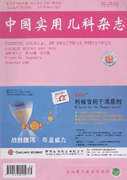Abstract: Objective To investigate the effects of early therapeutic intervention with nerve growth factor(NGF) on brain damage following severe asphyxia in neonates. Methods From Jan.2007 to Oct.2009,fifty-two cases of perinatal severe asphyxia in Guangzhou Children’s Hospital were randomly assigned to two groups: the control group (26 cases) received routine treatment(including cerebrolysin and citicoline); the study group (26 cases) was given NGF on the basis of routine treatment as early as possible (within twenty-four hours after birth). The incidence of the mortality were observed; the degree of hypoxic-ischemic encephalopathy (HIE) was evaluated; and the Neonatal Behavioral Neurological Assessment (NBNA) was done in both groups. Myelin basic protein(MBP) and S-100 protein were measured dynamically by ELISA in serum from all patients. Results There was no significant difference of the incidence of severe HIE and the mortality between the study group and the control group(23.08% vs 38.46%,χ2 = 1.4444,P > 0.05; 3.85% vs 7.69%,χ2 = 0.0000,P > 0.05). The level of blood serum MBP or S-100 protein in the asphyxiated newborns was higher than that of the normal term newborns. At 3d and 7~8d after birth,the level of blood serum MBP or S-100 protein in the study group was much lower than that in the control group. The percentage of the cases whose NBNA marks were less than 35 at 7~8 d and 14~16 d after birth in the study group was much lower than that in the control group(40.00% vs 70.83%,χ2 = 4.7055,P < 0.05;20.00% vs 50.00%,χ2 = 4.8640,P < 0.05). Conclusion Using NGF on the basis of the routine treatment as early as possible after resuscitation can reduce markedly the severity of asphyxia-induced brain damage in neonates.

